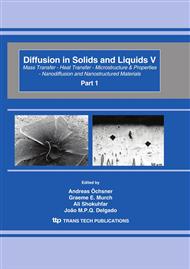p.702
p.708
p.715
p.722
p.728
p.733
p.739
p.745
p.757
Three-Dimensional Study of Heat and Mass Transfer in a Partially Porous Elongated Cavity
Abstract:
A 3D numerical analysis is carried out to investigate heat and mass transfer in a partly porous cavity of high aspect ratio. The goal is to determine the best physical and geometrical parameters that allow optimal heat and mass transfer rate in such domain used in a solar adsorption cooling system. The computational domain consists of a tall cavity heated on the left vertical wall and cooled on the opposing wall. The SIMPLE algorithm is used to handle the velocity pressure coupling. Simulation results allow determining the optimal configuration of the used porous substrate and plain fluid position in the cavity in order to optimize the performance of such solar adsorption cooling installation.
Info:
Periodical:
Pages:
728-732
Citation:
Online since:
April 2010
Authors:
Keywords:
Price:
Сopyright:
© 2010 Trans Tech Publications Ltd. All Rights Reserved
Share:
Citation:


